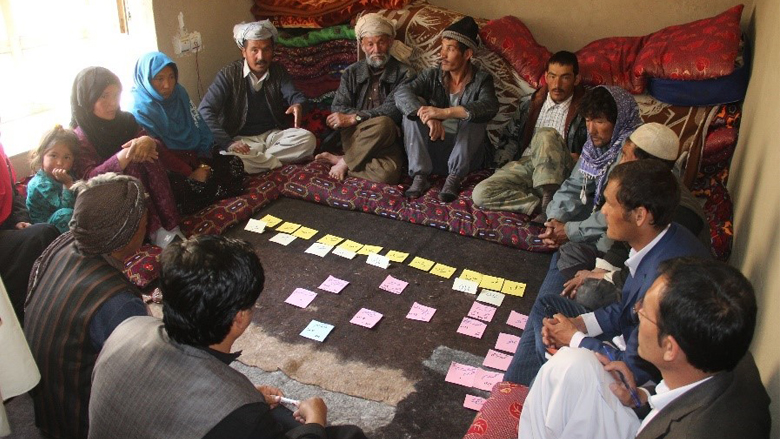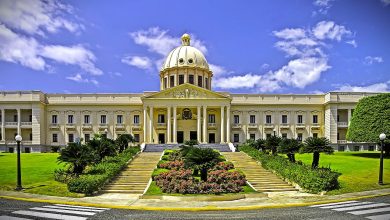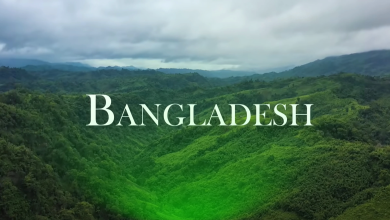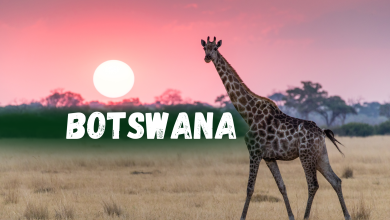Communities of Afghanistan: A Rich Tapestry of Culture and Tradition

Afghanistan’s communities are diverse, comprising various ethnic groups. The major ones include Pashtuns, Tajiks, Hazaras, and Uzbeks.
Afghanistan is a multicultural nation with a rich tapestry of ethnicities. Pashtuns are the largest group, making up around 42% of the population. Tajiks follow, constituting approximately 27%, predominantly residing in the northeastern and western regions. Hazaras, mostly Shia Muslims, account for roughly 9% and live in central Afghanistan.
Uzbeks, forming about 9%, are found in the northern areas. Each group has its own distinct language, traditions, and customs. This diversity shapes Afghanistan’s cultural heritage, influencing everything from cuisine to festivals. Understanding these communities is essential for grasping the nation’s complex social fabric.

Credit: polioeradication.org
Ethnic Diversity
Afghanistan is a nation known for its rich ethnic diversity. The country is home to various communities, each with its unique culture, language, and traditions. This diversity forms a complex tapestry that defines the nation’s identity.
Major Ethnic Groups
The major ethnic groups in Afghanistan include the Pashtuns, Tajiks, Hazaras, and Uzbeks. Each group has its distinct culture and language.
| Ethnic Group | Percentage of Population | Language |
|---|---|---|
| Pashtuns | 42% | Pashto |
| Tajiks | 27% | Dari |
| Hazaras | 9% | Dari |
| Uzbeks | 9% | Uzbek |
Minority Communities
Afghanistan also has several minority communities. These include the Turkmen, Baloch, Pashai, Nuristani, Aimaq, and others. Each of these communities adds to the country’s rich cultural mosaic.
- Turkmen: They primarily live in the north and speak Turkmen.
- Baloch: This group is found in the south and west, speaking Balochi.
- Pashai: They inhabit the eastern regions and speak Pashai.
- Nuristani: They live in the northeastern areas and speak Nuristani languages.
- Aimaq: Found in the central and northwestern regions, speaking Aimaqi dialects.
These minority communities, though smaller in number, play a crucial role. They contribute to the nation’s cultural richness and social fabric.
Traditional Attire
Afghanistan boasts a rich tapestry of traditional attire. Each region has its unique clothing style that reflects cultural and historical influences. Traditional Afghan attire is vibrant, diverse, and full of meaning.
Regional Clothing Styles
Afghan traditional attire varies across regions. The most notable styles include:
- Kabul: The capital city features modern yet traditional wear. Men often wear salwar kameez and women don colorful dresses with intricate embroidery.
- Herat: This western city is famous for its blue and green hues. Men wear long, flowing robes, and women don vibrant dresses with silk scarves.
- Kandahar: Known for its more conservative styles. Men wear pakol hats, and women cover themselves with chadari.
Each region’s attire tells a story of its people and traditions.
Symbolism In Dress
Afghan clothing is rich in symbolism. Colors, patterns, and accessories hold deep meanings.
| Element | Meaning |
|---|---|
| Colors | Red symbolizes bravery. Green represents prosperity. Blue stands for peace. |
| Patterns | Floral patterns signify beauty. Geometric designs represent strength and unity. |
| Accessories | Jewelry signifies wealth and status. Scarves denote modesty. |
Clothing in Afghanistan is more than just fabric. It’s a way of expressing identity and values.
Festivals And Celebrations
Afghanistan’s communities are rich in festivals and celebrations. These events are vital in preserving their cultural heritage. They also bring joy and unity among people.
Religious Festivals
Religious festivals in Afghanistan are deeply rooted in Islamic traditions. These festivals are celebrated with great devotion and enthusiasm.
- Eid al-Fitr: Marks the end of Ramadan. Families gather to pray and enjoy feasts.
- Eid al-Adha: Known as the Festival of Sacrifice. People honor the willingness of Ibrahim to sacrifice his son.
- Nowruz: The Persian New Year, celebrated by many Afghans. It marks the first day of spring and is a time of renewal.
Cultural Events
Cultural events in Afghanistan showcase the country’s diverse traditions and artistic expressions. These events provide a glimpse into the rich tapestry of Afghan life.
| Event | Description |
|---|---|
| Jashn-e-Kabul | A vibrant festival in Kabul. It features music, dance, and local crafts. |
| Attan Dance Festival | Celebrates the traditional Afghan dance, Attan. People perform in colorful attire. |
| Literary Festivals | These festivals honor Afghan poets and writers. They include readings and discussions. |

Credit: thehill.com
Culinary Traditions
The culinary traditions of Afghanistan are deeply rooted in its rich history and diverse cultural influences. Afghan cuisine reflects a tapestry of flavors, ingredients, and cooking techniques that have evolved over centuries. It offers a unique blend of taste and tradition.
Regional Dishes
Afghanistan boasts a variety of regional dishes that showcase the unique flavors of its provinces. Each region has its own specialties, influenced by local ingredients and cooking methods.
- Kabuli Pulao: A national dish made with rice, lamb, carrots, and raisins. It’s a favorite in Kabul.
- Bolani: A stuffed flatbread, often filled with potatoes, spinach, or lentils. Popular in the northern regions.
- Mantu: Steamed dumplings filled with seasoned meat, typically enjoyed in the central areas.
Culinary Influence And Exchange
Afghanistan’s culinary scene has been shaped by various cultural exchanges. The country lies at a crossroads, influencing and being influenced by neighboring cuisines.
Key influences include:
- Persian Cuisine: Use of saffron, nuts, and fruits.
- Indian Cuisine: Spices like cumin, coriander, and cardamom.
- Central Asian Cuisine: Techniques such as grilling and steaming.
The interplay of these influences has created a rich and diverse culinary landscape. Afghan food is a celebration of flavors and cultural heritage.
| Dish | Main Ingredients | Region |
|---|---|---|
| Kabuli Pulao | Rice, lamb, carrots, raisins | Kabul |
| Bolani | Flour, potatoes, spinach, lentils | Northern regions |
| Mantu | Flour, meat, onions, spices | Central areas |
Music And Dance
Afghanistan is a country rich in cultural heritage. Music and dance are vital parts of Afghan communities. These traditions bring people together and celebrate their shared history.
Traditional Instruments
Afghan music features a variety of traditional instruments. Each instrument has a unique sound and story.
| Instrument | Description |
|---|---|
| Rubab | A lute-like instrument made from wood and animal skin. |
| Tabla | Set of two drums used for rhythm. |
| Harmonium | Keyboard instrument that adds melody to songs. |
Popular Dance Forms
Dance is an important part of Afghan culture. Each region has its own popular dance forms.
- Attan: The national dance of Afghanistan. People dance in a circle.
- Logari: A lively dance performed at weddings and celebrations.
- Qarsak: A fast-paced dance from the Pashtun regions.
These dances often tell stories. They show the joy and resilience of the Afghan people.

Credit: www.sasaki.com
Craftsmanship
Afghanistan’s communities are renowned for their unique craftsmanship. These skills have passed down through generations. The country’s artisans create beautiful, intricate works. Their crafts reflect rich cultural heritage and history.
Handicrafts And Artisans
Afghan artisans are skilled in various handicrafts. These crafts include pottery, weaving, and metalwork. The artisans use traditional methods to create their pieces. Their work often features intricate designs and patterns.
Many regions in Afghanistan are famous for specific crafts:
- Herat: Known for exquisite glasswork and calligraphy.
- Kabul: Renowned for its beautiful carpets and textiles.
- Ghazni: Famous for its intricate wood carvings.
The artisans work with natural materials. They often use wool, silk, and clay. These materials are locally sourced, ensuring sustainability.
Modern Adaptations
Today’s artisans blend tradition with modern techniques. This helps their work stay relevant in a changing world. Young artisans are learning new skills. They use modern tools while preserving ancient methods.
Many artisans now sell their crafts online. This opens new markets for their work. They reach customers around the globe. This increases their income and supports their communities.
Some modern adaptations include:
- Eco-friendly dyes: Using natural colors to reduce environmental impact.
- Contemporary designs: Mixing traditional motifs with modern aesthetics.
- Collaborations: Working with international designers to create unique pieces.
The blend of old and new keeps Afghan craftsmanship alive. It ensures the survival of these precious skills for future generations.
Frequently Asked Questions
What Are The Major Ethnic Groups In Afghanistan?
Afghanistan’s major ethnic groups include Pashtuns, Tajiks, Hazaras, and Uzbeks.
How Many Languages Are Spoken In Afghanistan?
Over 40 languages are spoken, with Dari and Pashto being the most common.
What Is The Role Of Tribal Communities?
Tribal communities play a crucial role in local governance and social organization.
How Do Afghan Communities Celebrate Festivals?
Afghan communities celebrate festivals with traditional music, dance, and feasts, reflecting their rich cultural heritage.
Conclusion
The diverse communities of Afghanistan reflect a rich cultural tapestry. Understanding these groups fosters greater appreciation and unity. Celebrating their unique traditions and histories is essential. By learning more, we can promote peace and respect. Afghanistan’s communities offer valuable insights and lessons for the world.
Explore, engage, and embrace their stories.




